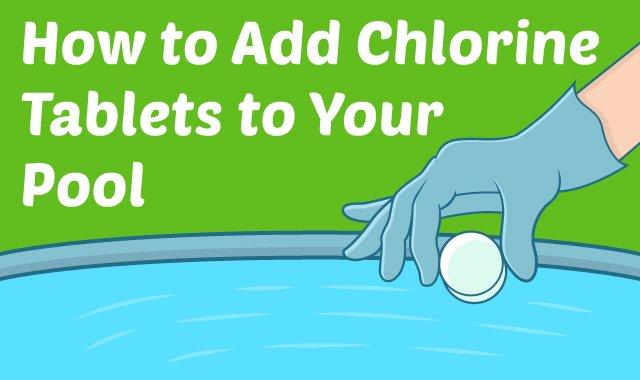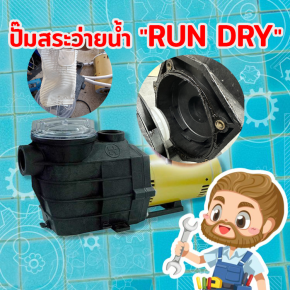How to Add Chlorine Tablets to Your Pool
31995 Views |

Why We Add Chlorine to Swimming Pools
Because it’s inexpensive, powerful, and effective, chlorine is one of the the most popular pool sanitizers on the market. Adding chlorine to your pool water will kill viruses and bacteria, keeping you, your friends, and your family safer when swimming.
How Much Chlorine Should You Add to Your Swimming Pool?
Ideally, the chlorine concentration of your swimming pool should be at least 1 part per million (ppm), and not go above 3 ppm.
Staying within that range is the safe and smart way to balance protection against contaminants with the risks of having too much chlorine in the water, which can cause eye, nose, lung, and throat irritation.
To ensure your pool water has the right amount of sanitizer, it’s essential to test the water on a regular basis. You can use test strips or kits for pool water testing, determine the exact levels of chlorine and other chemicals, and then fine-tune them as necessary.
How to Choose the Right Chlorine Tablets for Your Pool
Chlorine tablets come in one-inch and three-inch sizes. We prefer the three-inch tablets because they’re easier to handle and, depending on their popularity in your area, might even be less expensive than the one-inch version.

Four Ways to Add Chlorine Tablets to Your Pool
If you’re used to using chlorine granules that you add directly to the water, you may be thinking you can just throw a handful of tablets in and hope for the best.
Whoa, there! Before you start trying to skip those chlorine tablets on the surface of your pool, consider a few better options.
Floating Chlorine Dispenser
These plastic pool gadgets travel around your pool, dispersing sanitizer as the chlorine tablets inside dissolve. They’re convenient and low-maintenance, but if you have a pool liner, floaters may not be the right choice.
Floating dispensers can sometimes get caught in one location and dispense too much chlorine in a concentrated area, discoloring and even damaging your pool liner. They’re also passive, dispensing chlorine unevenly without flowing water passing over them as part of your pool’s water circulation.
Combined with the unwanted anxiety about possibly damaging your pool liner, the potential for disaster is simply too high compared to the perceived convenience.
Pool Skimmer
A better method is adding chlorine tablets directly to your swimming pool skimmer. When your filter is running, water will move quickly over the tablets in the skimmer basket, dissolving them much more effectively than the floater does. The chlorinated water is then pushed into your pool through the return jets, allowing chlorine to spread evenly throughout the pool.
One potential drawback to adding chlorine tablets to your skimmer baskets is that the tablets will continue to dissolve even when the filter isn’t running. This can create some highly chlorinated, highly corrosive water that can damage your equipment if left unattended.
You can get around this problem by removing the partially-dissolved tablets when your pool filter isn’t running, or by installing a variable-speed pool pump to cycle water continuously without running up an outrageous electric bill.
Automatic Chlorinator
We have a winner! This is our chlorine tablet dispersion method of choice. If you want greater control over your pool’s chlorination levels and don’t like fussing with chlorine tablets more than necessary, a chlorinator is your best bet.
You can load it up with tablets, set it for a chlorine level of 1 ppm to 3 ppm, and verify the level with test strips until you get a feel for the setting that works best based on your pool use, weather, and water quality.
This method combines the greatest efficiency and convenience for adding chlorine tablets to your pool. Just remember to make sure your chlorinator is the last thing the pool water passes through before re-entering the pool to make sure your water is clean, clear, and properly chlorinated.



